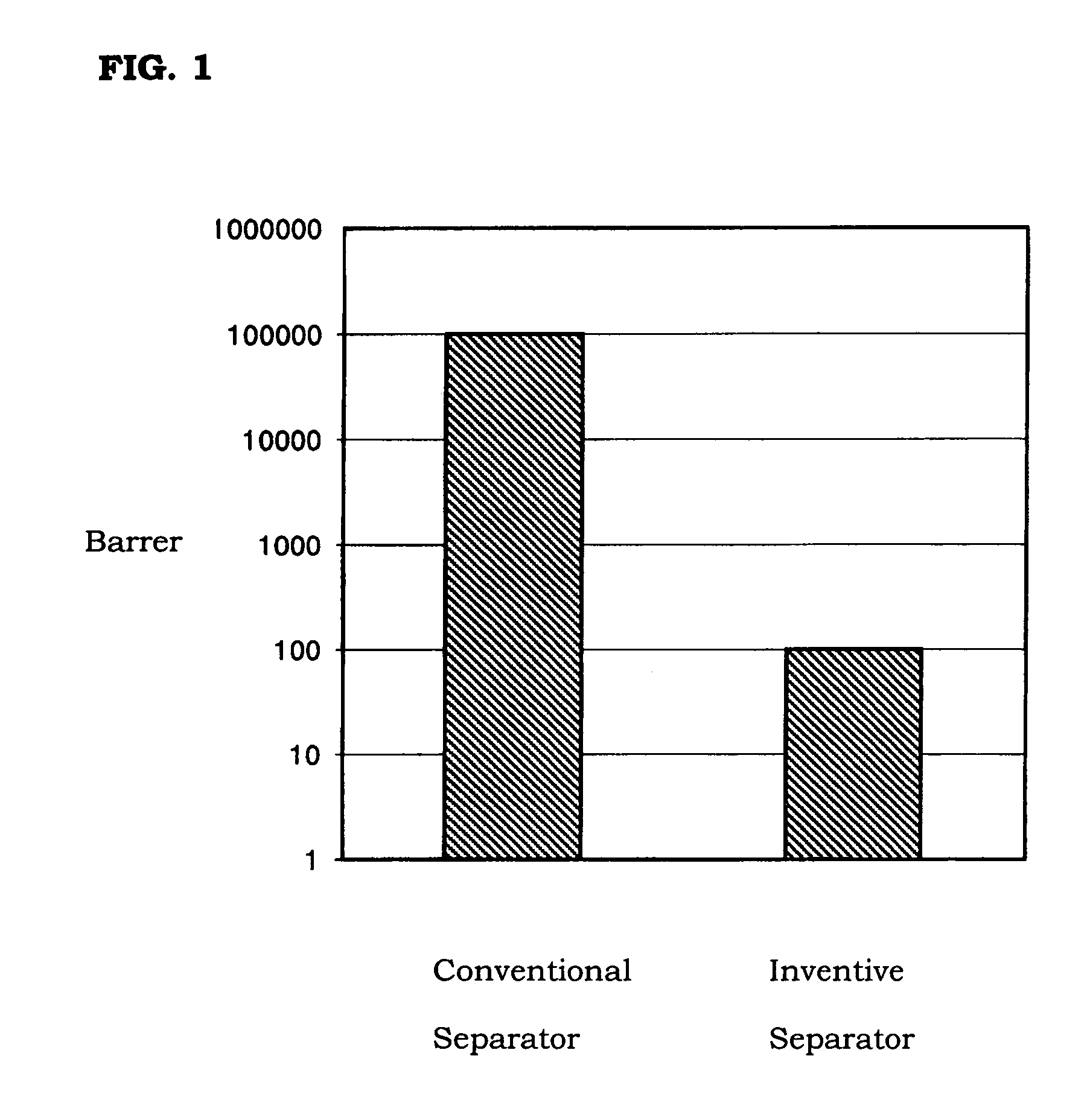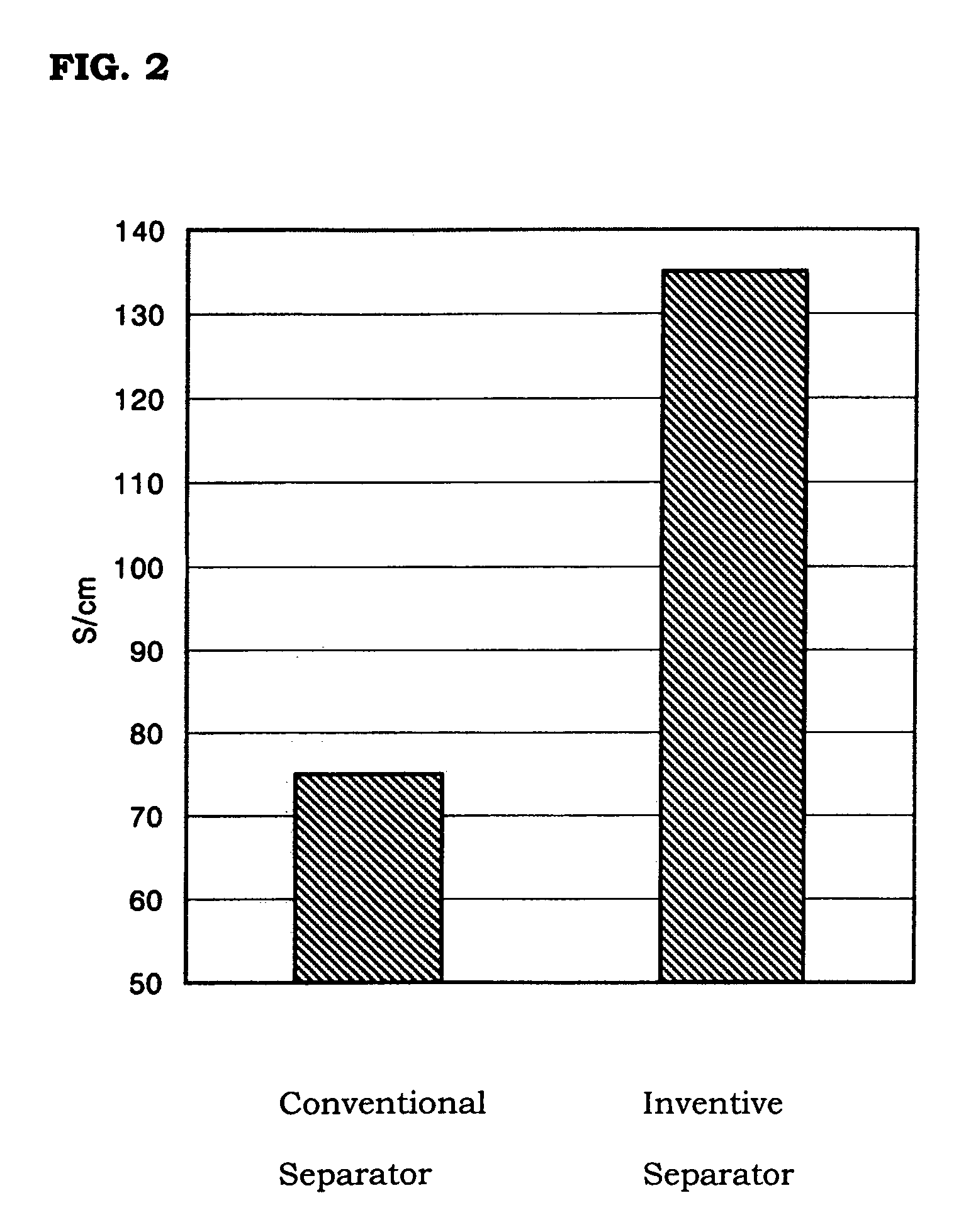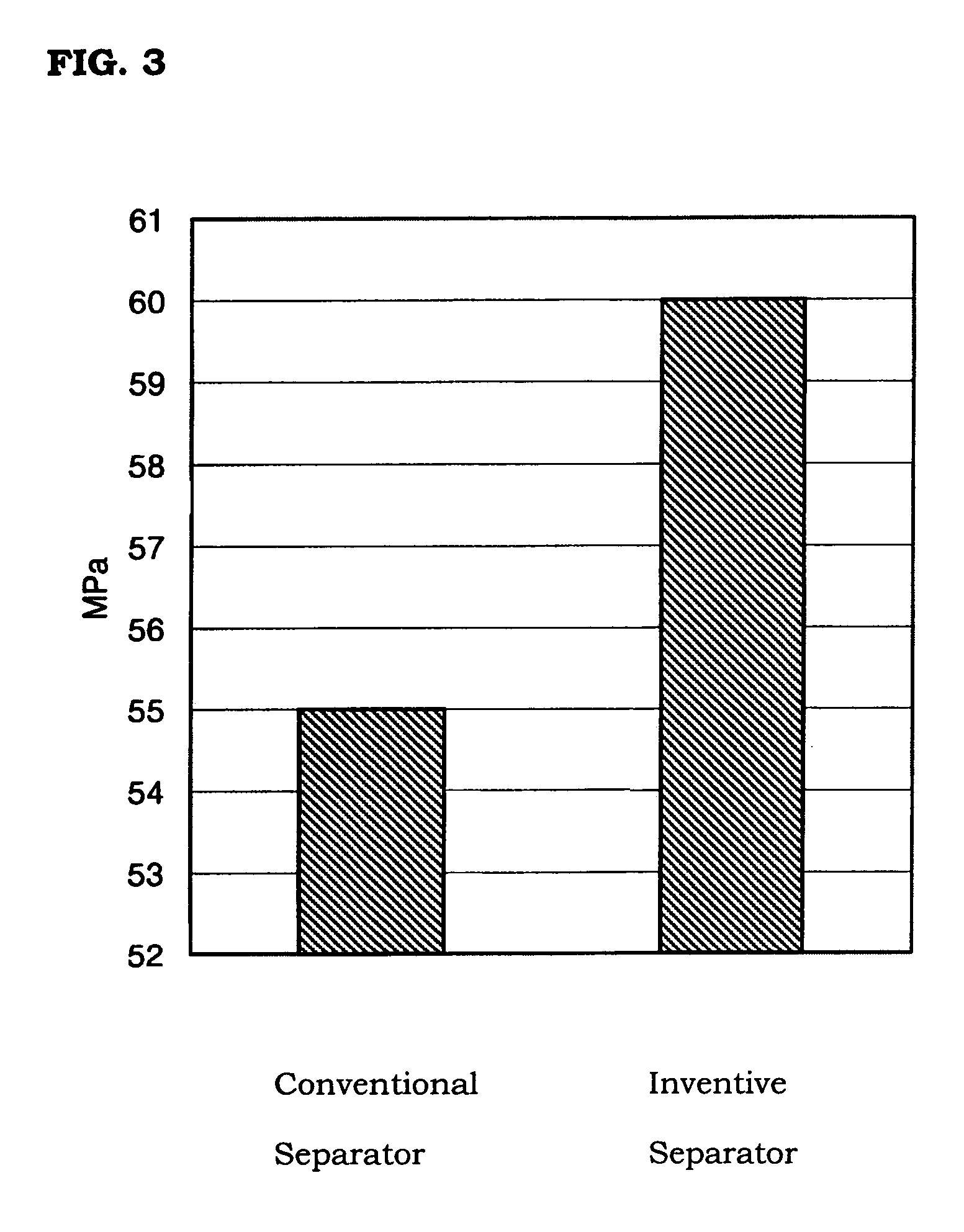Molding material for fuel cell separator and method for preparing the same
a fuel cell separator and molding material technology, applied in the direction of cell components, final product manufacturing, sustainable manufacturing/processing, etc., can solve the problems of shortening the service life of the fuel cell, affecting the performance of the separator, and incurring much higher processing costs than before. , to achieve the effect of reducing the gas permeability, and reducing the cost of processing
- Summary
- Abstract
- Description
- Claims
- Application Information
AI Technical Summary
Benefits of technology
Problems solved by technology
Method used
Image
Examples
example 1
[0031]1,200 parts by weight of a graphite powder, 50 parts by weight of an acid anhydride-based hardener, and 1 part by weight of TPP as a hardening accelerator were added to 100 parts by weight of an epoxy resin. Silane as a binder was added in an amount of 1% by weight, based on the graphite powder. At this time, planar expanded graphite having an average particle diameter of 0.05 mm was used as the graphite powder.
[0032]For homogeneous mixing, the epoxy resin, the hardener, the hardening accelerator and the binder were dissolved in acetone, and then the graphite powder was mixed with the solution using a mixer where both revolution and rotation are simultaneously performed.
[0033]After the addition, the mixture was allowed to stand in a vacuum oven at 50° C. for 3 hours to evaporate the acetone. The dried mixture was then subjected to compression molding to produce a separator (hereinafter, referred to as an “inventive separator”).
PUM
| Property | Measurement | Unit |
|---|---|---|
| particle size | aaaaa | aaaaa |
| particle size | aaaaa | aaaaa |
| particle diameter | aaaaa | aaaaa |
Abstract
Description
Claims
Application Information
 Login to View More
Login to View More - R&D
- Intellectual Property
- Life Sciences
- Materials
- Tech Scout
- Unparalleled Data Quality
- Higher Quality Content
- 60% Fewer Hallucinations
Browse by: Latest US Patents, China's latest patents, Technical Efficacy Thesaurus, Application Domain, Technology Topic, Popular Technical Reports.
© 2025 PatSnap. All rights reserved.Legal|Privacy policy|Modern Slavery Act Transparency Statement|Sitemap|About US| Contact US: help@patsnap.com



